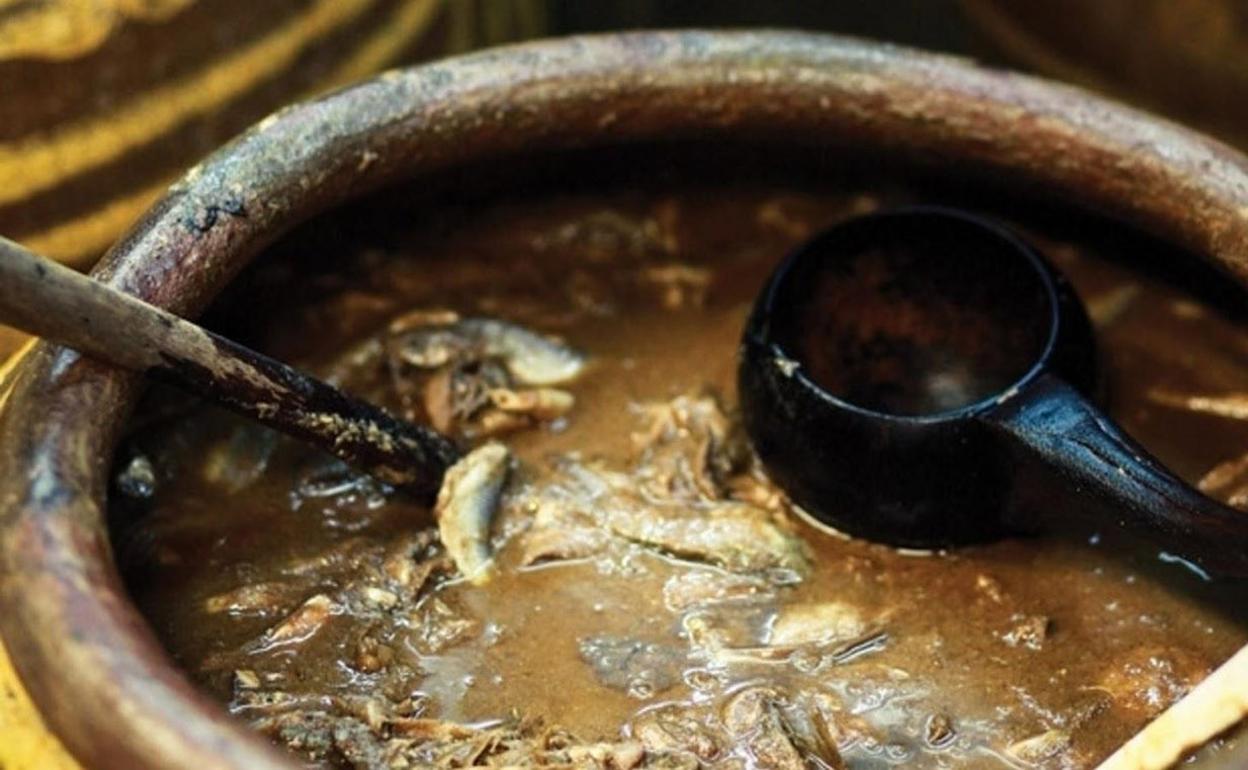n the culinary landscape of ancient Rome, one ingredient reigned supreme: garum. This fermented fish sauce was a cornerstone of Roman cuisine, beloved for its umami-rich flavor and used to enhance a wide variety of dishes. Despite its central role in Roman dining, garum remains somewhat mysterious to modern palates. In this article, we’ll explore what garum was, how it was made, and why it was so cherished by the Romans.
What Was Garum?
Garum was a fermented fish sauce made from the guts and blood of fish, mixed with salt, and left to ferment under the sun. The resulting liquid, a salty, savory elixir, was drained off and used as a condiment in cooking, much like soy sauce or Worcestershire sauce is used today. Garum was prized for its ability to enhance the flavor of foods, adding depth and complexity to everything from meats and vegetables to sauces and even desserts.
The sauce was made in various grades, with the highest quality garum reserved for the wealthy elite. Lower-quality versions, made from the leftover solids after the liquid was drained, were also produced and used by the lower classes. However, regardless of its grade, garum was a ubiquitous presence in Roman kitchens, found in virtually every dish served at Roman feasts.
How Was Garum Made?
The production of garum was both simple and labor-intensive. The process began with the selection of fish, typically small, oily fish like anchovies, mackerel, or sardines. These were combined with salt—at a ratio of one part fish to three parts salt—and left to ferment in large vats or amphorae. The mixture was exposed to the sun, and over the course of several months, the fish would break down through enzymatic activity, releasing their liquids into the salty brine.
As the fermentation progressed, the liquid would rise to the top, where it was carefully skimmed off and collected. This liquid was the prized garum, ready to be bottled and sold. The solid residue, known as “allec,” was often used as a lower-quality sauce or animal feed. The precise methods and recipes for garum varied by region and producer, leading to a wide range of flavors and qualities.
Why Was Garum So Popular?
The Romans adored garum not only for its taste but also for its versatility. It was used in nearly every dish—from seasoning meats, fish, and vegetables to being mixed into sauces and dressings. Garum was so essential to Roman cooking that it could even be found in dessert recipes, where it added a surprising savory note.
One reason for garum’s popularity was its ability to act as a preservative. The high salt content meant that it could keep foods from spoiling, making it invaluable in a time before refrigeration. Additionally, garum was believed to have health benefits; it was used as a medicine for ailments ranging from digestive issues to dog bites.
The sauce was produced and traded across the Roman Empire, with major production centers located in what is now Spain, North Africa, and Italy. Garum factories were large, industrial operations, with vats sometimes as large as swimming pools. The smell of garum production, however, was notoriously foul, leading to these factories being located on the outskirts of cities.
The Decline and Legacy of Garum
With the fall of the Roman Empire, the production of garum gradually declined. However, its influence did not disappear entirely. In some Mediterranean regions, variations of fermented fish sauces continued to be made, such as “colatura di alici” in Italy and “nus” in Vietnam. The concept of using fermented fish to create a flavorful condiment has endured in various forms around the world.
Today, while garum itself is no longer a staple of Western cuisine, there has been a renewed interest in this ancient sauce among chefs and culinary historians. Modern recreations of garum, often made with updated techniques and ingredients, are beginning to appear in gourmet kitchens, offering a taste of ancient Rome to contemporary diners.
Garum was more than just a condiment; it was a symbol of Roman culinary sophistication and ingenuity. Its complex production process and widespread use demonstrate the importance of flavor in Roman dining culture. Although the exact taste of ancient garum may be lost to history, its legacy lives on in the many fermented sauces that continue to enhance our meals today. As we rediscover and recreate this ancient sauce, we can gain a deeper appreciation for the flavors that once delighted the palates of the Roman Empire.

